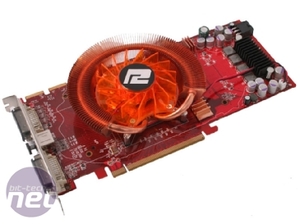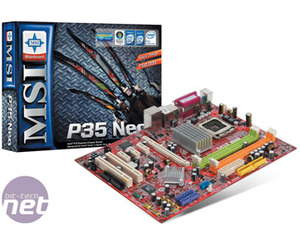
Budget – £450
Tim proved a few months back that you can just about buy a half decent gaming rig for just £400, although you will have to cut a few corners to do so. However, recently hardware and software prices have been going up rather than down, especially for high demand components like AMD’s ATI Radeon HD 4850 and even Nvidia's GeForceHowever, even with fluctuating prices and a tight budget of just £450 for a full system, you can still pick up some phenomenally impressive hardware more than capable of running modern games, and if you’re looking for a reasonably priced upgrade, this is where you should start looking.
Graphics Card
First Choice: Powercolor Radeon HD 4850 PCS+ 512MBUK Pricing: £121.17 (inc. VAT)
US Pricing: $184.99 (ex. Tax)
The current king of bang per buck graphics card is without a doubt the ATI Radeon HD 4850, delivering fantastic performance for a its price point and even snapping at the heels of Nvidia’s GeForce GTX 260 (the one with 192 stream processors) – which sell for about fifty percent more than the 4850!
As availability of Radeon HD 4850-based products has improved, we’ve started to see an increasing number of pre-overclocked, custom cooled versions from various board partners. The Powercolor Radeon HD 4850 PCS+ is the one that has impressed us the most so far with its affordability and excellent thermal performance.

We looked at this card just last week, and for just over £121, it’s fantastic value too, so we had to squeeze it in here. While there are cheaper HD 4850 cards out there, they all come with the frankly rubbish stock cooler, which means we literally have to remove the card from our test system with oven gloves after use.
Here you’ve got a whisper quiet, incredibly efficient custom cooler, and plenty of overclocking headroom to get the most out of the card. Even at stock settings, the RV770 based HD 4850 is more than enough to play any modern game at 1,280 x 1,024 and 1,680 x 1,050 resolutions in high detail (yes, even Crysis).
Alternative: Nvidia GeForce 9800 GT
UK Pricing: £94.73 (inc. VAT)
US Pricing: $125.49 (ex. Tax)
Basically just a rebadged 8800 GT with Nvidia’s Hybrid Power (which unless you’re running an Nvidia nForce 7-series motherboard for AMD processors, you’ll never use), this card took the market by storm when it was released in October last year - it was one of the best bang-for-buck graphics cards we've ever seen.
Although it has now been dethroned by the Radeon HD 4850, it still offers reasonable performance and good value for money at lower resolutions. If you really can't stand the red team for whatever reason then this is the best second choice, but it is convincingly outperformed in every single benchmark by the HD 4850, so seriously consider whether saving £20 is worth the drop in performance.
Processor
First Choice: Intel Pentium Dual-Core E5200UK Pricing: £53.38 (inc. VAT)
US Pricing: $84.49 (ex. Tax)
£55 for an Intel 2.5GHz dual-core processor? Yes please! While the 800MHz FSB and 2MB of cache might seem a bit limited, this processor is a full £25 cheaper than similarly clocked chips with 1,066MHz FSB and 3MB of cache, making it fantastic value.
There’s obviously going to be a slight performance gap in comparison to a more expensive processor with a higher front side bus and cache, but the beauty of this 45nm Wolfdale CPU is the low FSB and high 12.5x multiplier. This should mean that there’s a huge amount overclocking headroom in this little chip; it should comfortably hit over 3GHz and maybe even in excess of 3.5GHz if you're lucky!
Even if you’re not interested in overclocking it, at stock clock speeds it’s more than capable of tackling modern games while remaining very cool and using as little power as possible. Simply put, for the price to performance ratio, there’s not much that can touch Intel's Pentium Dual-Core E5200 at the moment.
Alternative: AMD Athlon 64 X2 4850e
UK Pricing: £42.49 (inc. VAT)
US Pricing: $66.66 (ex. Tax)
Going the AMD route with your CPU and motherboard means you can save more than a few quid for grabbing that improved graphics card or more memory. Having said that, clock for clock, Intel’s Core microarchitecture is significantly faster than the old K8 architecture, but that's not to say AMD's processors are inadequate for today's computing tasks - quite the opposite in fact. For just over £40, the Athlon 64 X2 4850e will get the job done, and given the fact it's a 45W 'Energy Efficient' model, it should overclock pretty nicely as well.
Motherboard
First Choice: MSI P35 Neo-F Intel S775UK Pricing: £51.70 (inc. VAT)
US Pricing: $84.99 (ex. Tax)
 While the P35 chipset is starting to show its age ever since Intel launched the P45 chipset this summer, it still represents a solid option and in the case of the MSI P35 Neo-F motherboard, it's fantastic value for money.
While the P35 chipset is starting to show its age ever since Intel launched the P45 chipset this summer, it still represents a solid option and in the case of the MSI P35 Neo-F motherboard, it's fantastic value for money. Because the board is based on the still recent P35 northbridge you’re getting full support for 800/1,066/1,333MHz FSB processors, as well as the excellent ICH9 southbridge, which includes six SATA 3Gbps and twelve USB 2.0 ports (four on the rear I/O and eight on the board via pin-outs) and up to 8GB of DDR2.
However, this is still a budget board, so there’s no eSATA or Intel Matrix RAID support and with just one PCI-E x16 slot – so no option for a second GPU for CrossFireX in the future either. However, for under £50 this should provide an excellent platform for a budget Intel machine.
Alternative: Gigabyte GA-MA78GM-S2H
UK Pricing: £56.40 (inc. VAT)
US Pricing: $89.99 (ex. Tax)
The problem with choosing an AMD processor is that you’re limited to AMD’s pretty dismal budget chipset choices - we found inexpensive boards using the 770X chipset were at best, mediocre, even if they do offer CrossFire support.
AMD's 780G on the other hand is an excellent chipset, allowing boards to hit the market for just under £55, and with the inclusion of the improved SB700 southbridge there is even more SATA and USB 2.0 to play with too. Richard looked at this board back when 780G first launched, and found it offered numerous high end features and impressive performance considering the reasonable price tag. What's more, even though the Gigabyte board is limited to 95W CPUs using the 45W one we recommended above that should provide plenty of overhead.
Having used the Gigabyte GA-MA78GM-S2H almost every day in Richard's own home theatre PC since the chipset launched, with the 4850e suggested above in socket, we can absolutely say you’re getting a rock solid single GPU platform that's extremely low power. It will serve as an excellent base for your either a home theatre PC or simply an inexpensive gaming rig - or both!

MSI MPG Velox 100R Chassis Review
October 14 2021 | 15:04








Want to comment? Please log in.